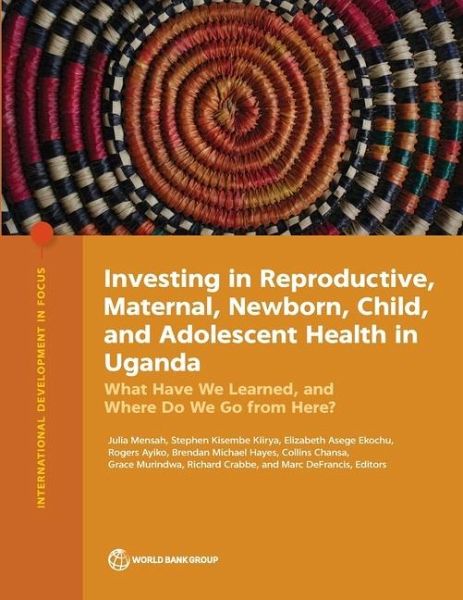
Investing in Reproductive, Maternal, Newborn, Child, and Adolescent Health in Uganda
What Have We Learned, and Where Do We Go from Here?
Herausgeber: Mensah, Julia; DeFrancis, Marc; Crabbe, Richard; Murindwa, Grace; Chansa, Collins; Hayes, Brendan Michael; Ayiko, Rogers; Ekochu, Elizabeth Asege; Kiirya, Stephen Kisembe
Versandkostenfrei!
Versandfertig in über 4 Wochen
44,99 €
inkl. MwSt.

PAYBACK Punkte
22 °P sammeln!
In Uganda, conditions in reproductive, maternal, newborn, child, and adolescent health (RMNCAH) remain the primary drivers of morbidity and mortality, accounting for 60 percent of years of life lost. The high burden of these conditions can be attributed to a poor quality of care resulting from inadequate financial, human, and material resources compounded by weak multisectoral coordination. Moreover, the country's high population growth rate and a young population imply that RMNCAH service delivery will continue to dominate health sector reforms--even with the increasing prevalence of noncommu...
In Uganda, conditions in reproductive, maternal, newborn, child, and adolescent health (RMNCAH) remain the primary drivers of morbidity and mortality, accounting for 60 percent of years of life lost. The high burden of these conditions can be attributed to a poor quality of care resulting from inadequate financial, human, and material resources compounded by weak multisectoral coordination. Moreover, the country's high population growth rate and a young population imply that RMNCAH service delivery will continue to dominate health sector reforms--even with the increasing prevalence of noncommunicable and infectious diseases. Over the past two decades, Uganda has focused on improving the quality of RMNCAH service delivery, leading to declines in the maternal, infant, and under-five mortality ratios and the increased use of modern contraception among married women. However, the neonatal mortality and teenage pregnancy rates have stagnated, and the low civil registration of births and deaths remains challenging. Investing in Reproductive, Maternal, Newborn, Child, and Adolescent Health in Uganda: What Have We Learned, and Where Do We Go from Here? comprises 12 studies conducted as part of the RMNCAH Operational Research Program drafted between 2019 and 2021 and finalized and disseminated in October 2022 across 45 districts of Uganda with funding from Sweden and the World Bank. These studies underscore important lessons learned and offer suggestions for enhancing the delivery of RMNCAH interventions. Each chapter represents one study and discusses service delivery, the health workforce, financing, health information systems, and governance and leadership. Two appendixes summarize key findings and recommendations and explain the roles of key stakeholders in the RMNCAH Operational Research Program.


